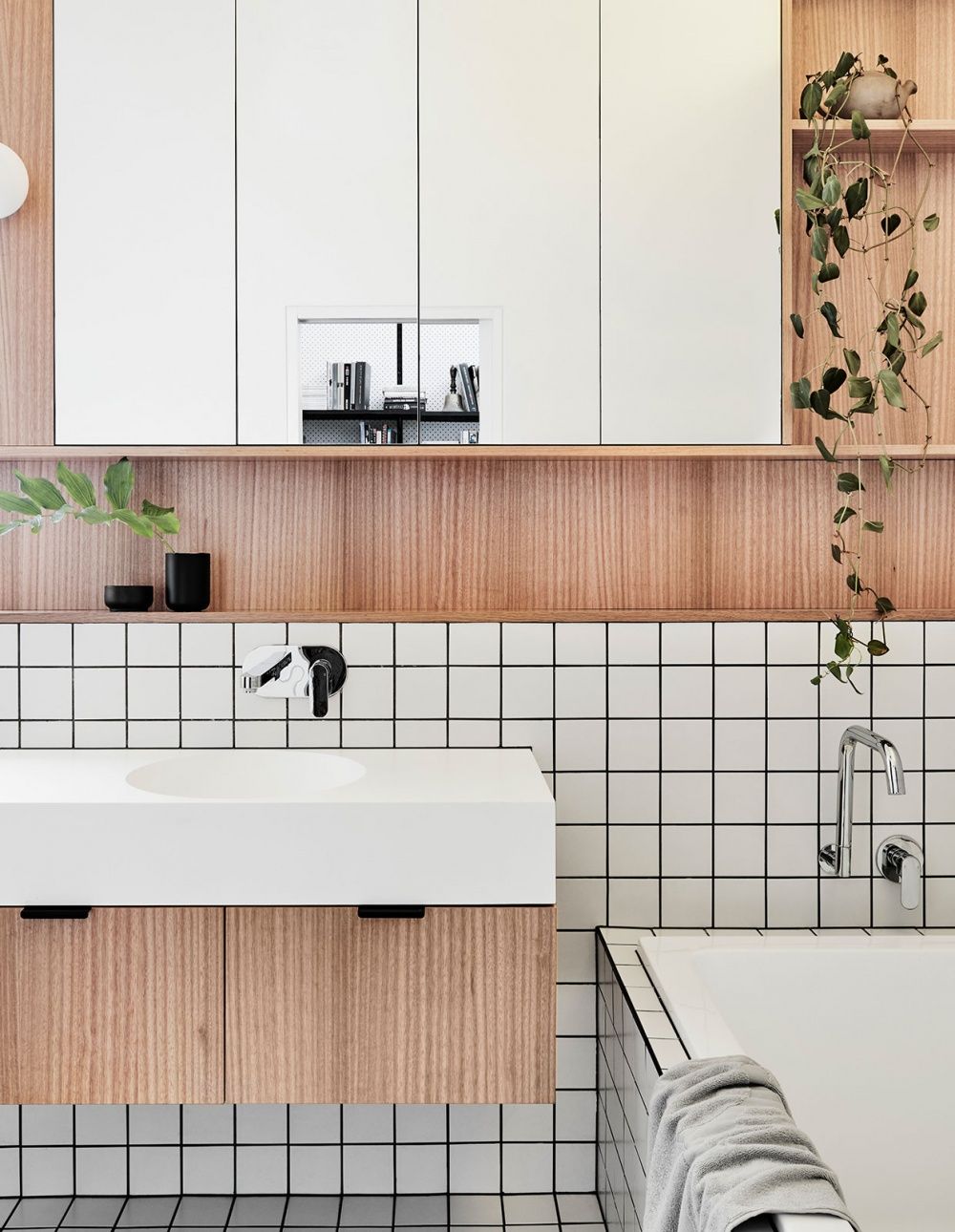No Products in the Cart
With so many decisions to make and things to consider it's often hard to know where to start.
Designing with tiles is no exception. Besides the obvious things like, where to use it, what to use and how to use it.
We are here to give you our insider top tips to ensure you are covering all the bases before you set out on your selection journey.
 Credit : Farmers Daughters Interiors
Credit : Farmers Daughters Interiors

Whether you are planning on tiling a large floor area, a bathroom, laundry or a feature fireplace, consider the flow.
Which direction will the pattern take you, how will it compliment or contrast against other flooring elements, and how collectively the whole designs integrates together. Often you want the tiles to feel unique in their own space, but for best design overall, all the elements must flow together.
People often forget to think about the directional flow throughout a space. A horizontally laid tile can accentuate the width of a room, a vertically stacked wall tile can articulate the height of a room.
Consider door thresholds, both internally and externally. Where different product elements meet and room integration. Does your design flow seamlessly, or should a change in direction be considered to maximise the flow?
This can also mean utilising the same product throughout multiple spaces, to ensure continuity and flow. For example the feature tile on your kitchen splashback, continued to your butlers pantry or even laundry space. This will help increase the flow and link the spaces together.
There are endless possibilities when it comes to tiles, so there is no one size fits all approach to selecting the right combination. There are a few simple things that can help define a space;
Scale - Utilse scale to create visual contrast without overpowering your space. A large format floor tile teamed with smaller version wall or feature tile can create a subtle point of difference while maintaining continuity throughout your design.
Finish -When it comes to finishes it’s all about mixing up surface textures within a space. Experiment with texture pairing; rough with smooth and matt with gloss, in order to achieve a curated look and provide a sensory experience that draws the eye and encourages touch.
Print - Patterned & printed tiles offer the opportunity to add an exotic touch to any room. They create visual intrigue and can be a great way to express your personal character. There is a wide variety of prints available in the tile space. From bold and extravagant patterns to inspired natural stone look alikes. Combining aesthetics and luxury without sacrificing practicality.

Vertically stacking subway tiles will put a new twist on a well-loved tile style. Adding a herringbone pattern to your floor (might send your tiler crazy) but will create a whole next level of luxe in your home.
Think about this well in advance, as often your contractor will go ahead and work out a standard set out for your space. If you want something out of the box....get in first to avoid being disappointed!

Credit : Taylor Knights Architects
Okay, with these things in mind you are well on your way to making a considered and conscious tile selection and really bring your project to life! GOOD LUCK!
Your home should tell the story of who you are, and be a collection of what you love — Nate Berkus